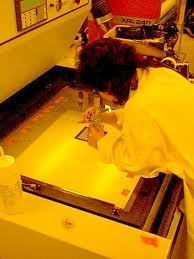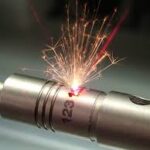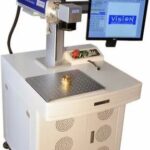Chemical Etching Work
Material Selection
A thin metal sheet is chosen, typically ranging from 0.01mm to 1mm in thickness.
Common metals used include stainless steel, copper, aluminum, brass, and nickel.
Cleaning
The metal sheet is thoroughly cleaned to remove dirt, oils, or contaminants that could interfere with the process.
Photoresist Coating
A light-sensitive photoresist layer is applied to the metal sheet.
This coating protects the areas of the metal that should not be etched.
Image Transfer
A photographic mask with the desired design or pattern is placed over the photoresist layer.
The sheet is exposed to UV light, which hardens the photoresist in the exposed areas. The unexposed areas remain soft.
Development
The soft photoresist is washed away, exposing the underlying metal in specific areas that will be etched.

Chemical Etching
The sheet is immersed in an etching solution (e.g., ferric chloride or nitric acid).
The chemical reacts with the exposed metal, dissolving it and creating the desired pattern or design.
Stripping
After etching, the remaining photoresist is removed, leaving the finished part or design.
Materials Used in Chemical Etching
Chemical etching is compatible with a wide range of metals, including:
Stainless Steel: Used for industrial components, stencils, and decorative items.
Copper: Commonly used in electrical and electronic components.
Aluminum: Lightweight and corrosion-resistant, ideal for aerospace and automotive parts.
Brass: Suitable for decorative applications and electrical connectors.
Nickel and Alloys: Used in high-performance applications requiring durability.
Applications of Chemical Etching
Chemical etching is widely used across various industries for both functional and decorative purposes. Key applications include:
Electronics
Manufacturing circuit boards, lead frames, and EMI/RFI shielding components.
Produces fine, precise designs required for electronic devices.
Aerospace
Used to create lightweight components like filters, sensors, and precision parts.
Ideal for high-precision applications where weight is critical.
Automotive
Etching metal gaskets, fuel injector components, and decorative trim.
Ensures consistent performance under extreme conditions.
Medical Devices
Creating surgical instruments, diagnostic equipment, and implants.
Ensures high precision and biocompatibility.
Decorative and Artistic Uses
Producing nameplates, jewelry, and ornamental designs.
Allows intricate patterns that are not achievable with traditional methods.
Industrial
Manufacturing sieves, screens, and filters for machinery and industrial processes.
Delivers high precision and durability.

Advantages of Chemical Etching
High Precision
Achieves intricate designs and tight tolerances, down to micrometer-level accuracy.
Cost-Effective for Complex Designs
Ideal for producing prototypes or small-to-medium batches without expensive tooling.
Non-Contact Process
No physical force is applied, preventing material deformation or damage.
Material Versatility
Can be used on various metals and alloys with excellent results.
No Heat-Affected Zones
The process does not generate heat, preserving the mechanical properties of the material.
Environmentally Friendly
With proper waste management, chemical etching produces minimal environmental impact.
Limitations of Chemical Etching
Material Thickness
Best suited for thin metals; thicker materials may require alternative methods.
Chemical Handling
Requires proper safety measures for handling and disposal of hazardous chemicals.
Slower for High Volumes
Not as fast or cost-effective as stamping for large-scale production runs.
How to Choose Chemical Etching for Your Project
When deciding whether chemical etching is the right process for your needs, consider the following:
Complexity of Design: Ideal for intricate and detailed patterns.
Material Thickness: Best for thin metals.
Batch Size: Cost-effective for prototypes and small to medium production runs.
Tolerances: Suitable for applications requiring high precision.
Material Compatibility: Ensure the selected metal works with the available etchants.
Conclusion
Chemical etching is a versatile and precise manufacturing technique that has transformed industries requiring detailed metal parts. Its ability to create intricate patterns without compromising material integrity makes it a go-to process for various applications, from electronics to decorative art. By understanding its advantages, limitations, and applications, you can harness chemical etching to meet your specific project requirements efficiently and cost-effectively.




